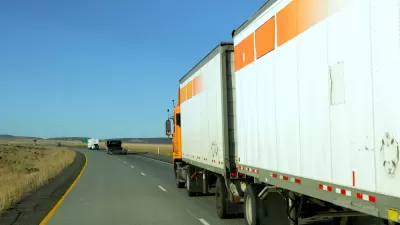The California Air Resources Board has petitioned the U.S. EPA to adopt more stringent emissions standards for locomotives in order to improve air quality at rail yards, many of which are located adjacent to disadvantaged communities.
"Reducing locomotive-related emissions and the resulting air toxic hot spots near railyards is a high priority for disadvantaged communities within California and around the nation,” said California Air Resources Board chair Mary D. Nichols in an April 14 press release.
Proposed emission standards would cut toxic and smog-causing emissions by 85% for diesel particulate matter (PM) and 66% for oxides of nitrogen (NOx) below current ‘Tier 4’ levels. Newly manufactured locomotives would have some zero-emission mile capability.

Courtesy of California Air Resources Board
According to the internet forum DieselNet, Tier 0-2 standards, adopted in December 1997, were "applied to locomotives originally manufactured from 1973, any time they were manufactured or remanufactured."
Tier 3-4 standards: A regulation signed in March 2008 introduced more stringent emission requirements.
- Tier 3 standards became effective from 2011/12.
- Tier 4 standards, which were originally intended to require exhaust gas aftertreatment technologies, became effective from 2015.
- The 2008 regulation also includes more stringent emission standards for remanufactured Tier 0-2 locomotives.
"CARB is requesting the development of updated emission standards, including standards for newly manufactured locomotives as well as for remanufactured locomotive engines," writes Stuart Chirls for RailwayAge.
Nichols urged the [U.S. Environmental Protection Agency] EPA “to exercise its authority to adopt more stringent locomotive emission standards to address issues affecting public health and welfare, and so that all states can meet federal air quality standards and climate goals." The Board asked the EPA to respond by this summer.
However, already stringent Tier 4 standards and market conditions may cause rail manufacturers to oppose CARB's petition, suggests an April 2016 RailwayAge article, "Engines of change," by William C. Vantuono, Editor-in-Chief:
“Two years ago, every serviceable locomotive was reactivated,” noted Oliver Wyman’s Jason Kuehn at Rail Equipment Finance 2016. “Now, 15% or more of the road locomotive fleet is in storage. The price spread between natural gas and diesel has choked off interest in LNG and CNG-fueled locomotives.
And Tier 4 emissions levels are so strict that they’ve halted the virtuous cycle supporting locomotive replacement. We’ve gone from the perfect storm to a dead calm in two short years.”
A 117-page technical report, "Transitioning to a Zero or Near-Zero Emission Line-Haul Freight Rail System in California: Operational and Economic Considerations Rail Emission Reduction Program" (pdf) was prepared for CARB by the University of Illinois at Urbana-Champaign Rail Transportation and Engineering Center (RailTEC).
It was determined that the most likely implementation scenario for any of the above locomotive technologies within the South Coast [Air Basin] is operation of a captive fleet of new technology locomotives within the basin and conventional diesel-electric locomotives outside the basin.
Trains entering and exiting the basin must exchange new technology and conventional diesel-electric locomotives at a locomotive exchange point facility near the boundary of the air basin.
FULL STORY: California formally petitions for zero-emissions locomotives

Planetizen Federal Action Tracker
A weekly monitor of how Trump’s orders and actions are impacting planners and planning in America.

Congressman Proposes Bill to Rename DC Metro “Trump Train”
The Make Autorail Great Again Act would withhold federal funding to the system until the Washington Metropolitan Area Transit Authority (WMATA), rebrands as the Washington Metropolitan Authority for Greater Access (WMAGA).

DARTSpace Platform Streamlines Dallas TOD Application Process
The Dallas transit agency hopes a shorter permitting timeline will boost transit-oriented development around rail stations.

Renters Now Outnumber Homeowners in Over 200 US Suburbs
High housing costs in city centers and the new-found flexibility offered by remote work are pushing more renters to suburban areas.

The Tiny, Adorable $7,000 Car Turning Japan Onto EVs
The single seat Mibot charges from a regular plug as quickly as an iPad, and is about half the price of an average EV.

Supreme Court Ruling in Pipeline Case Guts Federal Environmental Law
The decision limits the scope of a federal law that mandates extensive environmental impact reviews of energy, infrastructure, and transportation projects.
Urban Design for Planners 1: Software Tools
This six-course series explores essential urban design concepts using open source software and equips planners with the tools they need to participate fully in the urban design process.
Planning for Universal Design
Learn the tools for implementing Universal Design in planning regulations.
Municipality of Princeton
Roanoke Valley-Alleghany Regional Commission
City of Mt Shasta
City of Camden Redevelopment Agency
City of Astoria
Transportation Research & Education Center (TREC) at Portland State University
US High Speed Rail Association
City of Camden Redevelopment Agency
Municipality of Princeton (NJ)




























